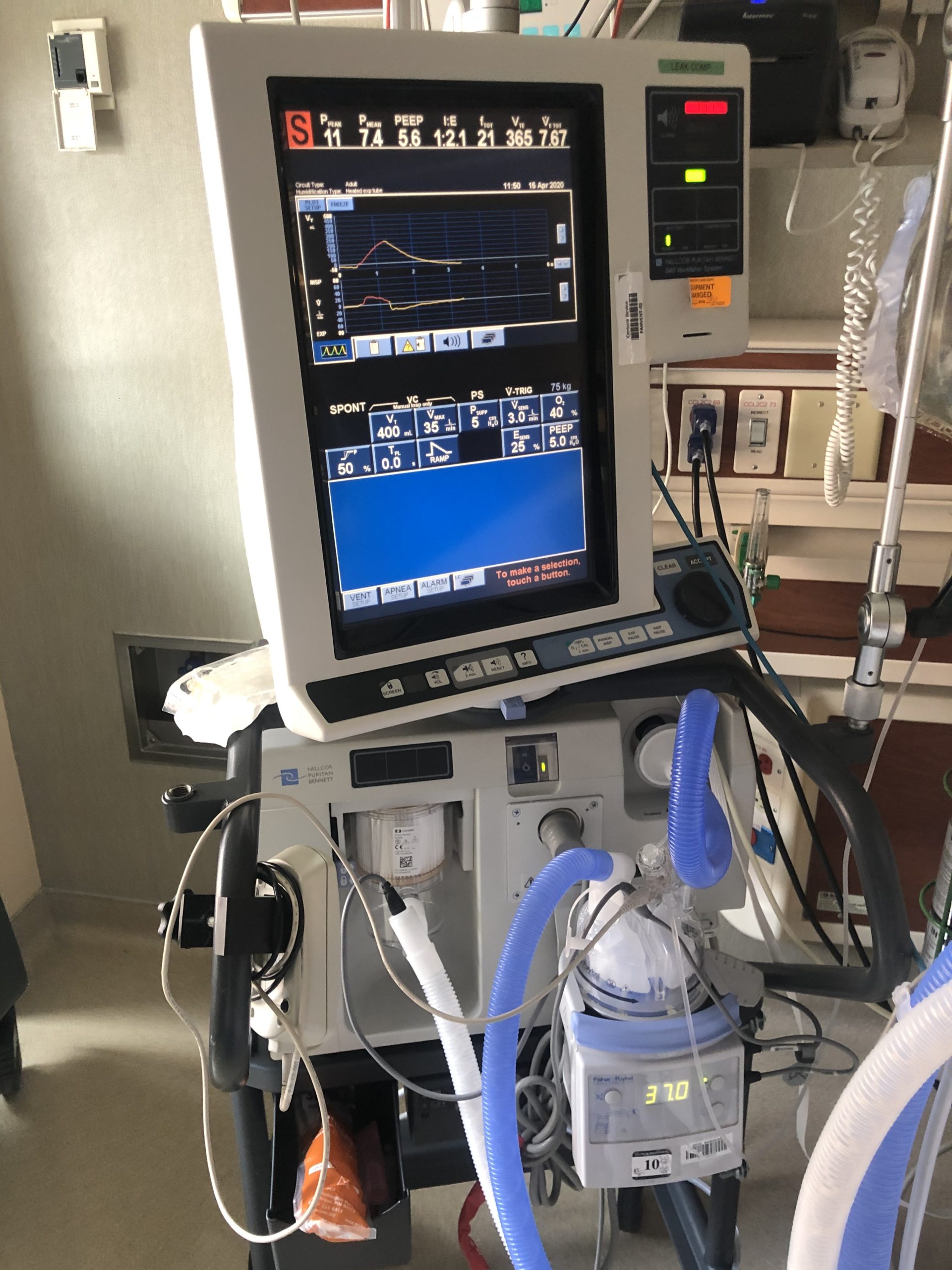
22 Sep What Are Ventilator Parts and Function?
Ventilators are the pneumatic devices working harder than any other to save lives during COVID-19. Nearly 20 percent of people known to have COVID-19 end up in the hospital, with 35.7 percent of those hospitalizations requiring intubation.
The constant use and recent shortage of ventilators mean that the machines — as well as the ventilator wiring assemblies — are stressed well beyond normal levels, serving more than 1.1 million patients.
With the nation’s medical facilities working overtime, ventilators need to be reliable. Certification organizations updated their standards in 2015 and 2018 to keep pace with modern equipment. At the time, hospitals were still operating at pre-pandemic levels. New connectors and machines must rise to meet the demands of the new normal.
Are Ventilators Effective?
To better understand the impact a ventilator has, consider the outbreak that spawned the device. This requires traveling back to 1952 when a polio outbreak struck Copenhagen, Denmark. Up to 24 percent of the 50 patients admitted daily suffered from respiratory failure.
People placed in the iron lung, the only solution at the time, were dying at an alarming rate until Dr. Bjorn Ibsen thought to insert a tube into patients’ lungs via a tracheostomy and use a bag to provide oxygen. The procedure saved 120 patients and led to the invention of the electronic ventilator within two decades.
How Do Ventilators Work?
Ventilators work by providing clean humidified oxygen to a patient’s lungs and removing carbon dioxide. Modern mechanical ventilators still require specialists to insert a breathing tube.
The device humidifies oxygen before entering the breathing tube until it reaches the same moisture level as the air in our bodies. Another tube removes carbon dioxide to fully recreate how we breathe. Used air exits through an exhaust port.
Replacing at least some of the breathing function is vital in many COVD-19 cases. The virus damages the lungs, limiting airflow which can result in death. Most people report difficulty performing everyday tasks such as walking up and down stairs or even to the refrigerator due to decreased lung capacity.
Ventilator Parts and Function
Today’s ventilators are much more complex than earlier electronic models. Every part of the ventilator needs to function properly to ensure that a patient receives the optimal amount of oxygen at the correct humidity level.
Critical subsystems and components include:
- Circuit, viral or bacterial filters and pumps used to push clean air
- Humidifier chambers that add moisture to the air
- Breathing circuits, including the breathing tubes inserted into the patient
- Electronic circuits and water tanks used to humidify the air
- Computers and sensors used to track vital information
Every part works as a whole to keep a person alive and notify doctors of the progression of a patient’s underlying respiratory illness. The failure of any part of the system poses a serious problem.
Sensors in Ventilators
Miniaturization since the 1970s has allowed ventilators to better serve patients. Today’s devices combine sensors at both ends of the reusable portion of the breathing apparatus, the humidifier, and the exhaust port. These track the rate at which a patient breathes and other vitals as well as machine-related information such as the humidity level.
Data transfer cables in the wiring assembly connect these sensors to a central computer which feeds a display device. The sampling rate must be larger than 200 samples per second to collect useful information.
Proper Ventilator Cable Assemblies
The wiring assembly connects every system. All wires and cables not part of subsystems are part of this assembly.
dVentilator Cable Assemblies:
- Provide a source of input energy to the pump and humidifier
- Supply power to and retrieve data from the output sensors
- Run throughout the entire device to connect each component to the central computer
Ventilator assembly requires an understanding of sensors as well as data and power cables. Using inferior cable assemblies to combine the parts of your machine reduces the ability of the humidifier chamber to function and can provide incorrect and outdated data to the display computer.
Can Bad Wiring Affect a Ventilator?
Faulty or poor-quality ventilator wiring impedes the machine’s capacity to keep a patient alive. Any damage to the wiring and its protective sheath causes may cause the humidity level to drop — or worse, could result in a complete failure. Some electronic components can overheat, putting stress on cable assemblies that could cause performance issues.
A study by researchers at the University of Minnesota found that, despite being able to partially account for unheated circuits, overheated circuits resulted in a serious loss of humidity that could not be controlled. Poor quality and damaged wiring, especially in ventilators, make this issue worse.
Quality in Ventilator Manufacturing
Doctors and technicians need to be able to trust their medical devices. Luckily, the International Standards Organization and other institutions certify manufacturing processes. The ISO 80601-2-72:2015 standard specifically applies to lung ventilators for home and patient care. This standard, in conjunction with General Standard IEC 6061-1:1988, ensures that medical devices are up to the challenge of extended use.
Older standards from 2004 and 1996 no longer apply to the creation of quality devices. We strive to meet the stringent requirements set forth to protect patients. NAI’s Gaylord, Michigan and Suzhou, China plants adhere to the most recent standards for ventilator manufacturing.
What to Look for in Ventilator Wiring Assemblies?
Ventilators save lives. The electronic machines used in modern hospitals are far more complex than the primitive devices used by Dr. Ibsen. They are even more complex than early machines. Ventilator wiring assemblies are working overtime to provide useful information during this trying time.
NAI produces quality products backed by ISO 13485 certification. We strive to create reliable performance for critical-to-life applications.
Recent projects for ventilator assemblies manufactured by NAI have leveraged the company’s vast experience in producing cable assemblies for medical devices and equipment, as well as their capabilities, global footprint, ISO 13485 certification, and cleanroom facilities. NAI has been a key supplier of ventilator and other medical assemblies during the current pandemic.
Keep up to date on how NAI products are connecting the world on our news page.

